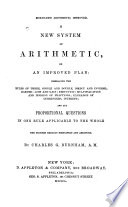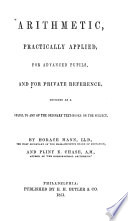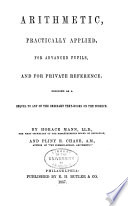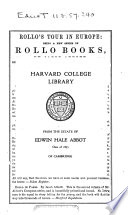 | Benjamin Greenleaf - Arithmetic - 1848 - 204 pages
...SECOND METHOD. 25.44 1.0 6) 2 5.4 4 ($2 4 Ans. 1 00 212 106)2544(824 Ans. 424 212 424 424 424 RULE. ' Divide the given sum by the amount of $1 for the given rate and time, and the quotient will be the present worth. Or, multiply the given sum by 100, and divide... | |
 | Charles Guilford Burnham - 1850 - 350 pages
...year hence. From the above we derive the following RULE. Art. 218i — To find the present worth — Divide the given sum by the amount of $1 for the given time, and the quotient will be the PRESENT WORTH. The present worth, subtracted from the debt, will leave the... | |
 | Horace Mann - 1851 - 384 pages
...compound discount, or to find the present worth at compound interest, of any sum due at a future time, divide the given sum by the amount of $1 for the given time. EXAMPLE. — Whemnoney is worth 5 per cent. compound interest, what is the present worth of $5000 due... | |
 | Benjamin Greenleaf - Arithmetic - 1857 - 452 pages
...from the given sum, gives $ 0.72 as the discount. RULE. — Divide the given sum by the amount of $ 1 for the given time and rate, and the quotient will be the PRESENT WORTH. From the given sum subtract the present worth, and the remainder will be the DISCOUNT. EXAMPLES. 2.... | |
 | Charles Guilford Burnham - Arithmetic - 1857 - 328 pages
...year hence. From the above we derive the following RULE. Art* 213. — To find the present wortli — Divide the given sum by the amount of $1 for the given time, and the quotient will be the PRESENT WORTH. The present worth, subtracted from the dtbt, will leave the... | |
 | Charles Guilford Burnham - 1857 - 342 pages
...year hence. From the above we derive the following RULE. Al'ti 213. — To find the present worth — Divide the given sum by the amount of $1 for the given time, and the quotient will be the I"I:E.SEXT WORTH. The present worth, subtracted from the debt, will leave... | |
 | Horace Mann, Pliny Earle Chase - Arithmetic - 1857 - 398 pages
...compound discount, or to find the present worth at compound interest, of any sum due at a future time, divide the given sum by the amount of $1 for the given time, EXAMPLE. — When money is worth 5 per cent, compound interest, what is the present worth of $5000... | |
 | Horace Mann, Pliny Earle Chase - Arithmetic - 1857 - 388 pages
...compound discount, or to find the present worth at compound interest, of any sum due at a future time, divide the given sum ~by the amount of $1 for the given time. EXAMPLE. — When money is worth 5 per cent. compound interest, what is the present worth of $5000... | |
 | James Stewart Eaton - Arithmetic - 1857 - 376 pages
...becoming due. 228. The rule for finding the present worth is that given in Prob. 4, Art. 210 ; viz.: — Divide the given sum by the AMOUNT of $1 for the given rate and time. 229. The DISCOUNT is found by subtracting the present worth from the face of the debt.... | |
 | James Bates Thomson - Arithmetic - 1858 - 400 pages
...interest? 260« To find the present worth and the discount of a sum or debt, for any given time or rate. Divide the given sum by the, amount of $1, for the...and rate, and the quotient will be the present worth of the debt. Subtract the present worth from the given sum or debt, and the remainder will be the discount.... | |
| |